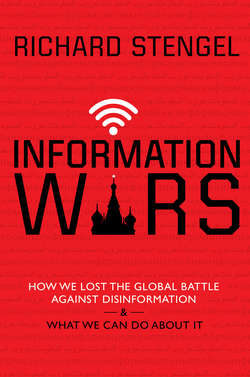Читать книгу Information Wars - Richard Stengel - Страница 25
На сайте Литреса книга снята с продажи.
Rethinking Rethinking
ОглавлениеI must have gotten a dozen memos in the first few weeks about convening meetings to “reimagine PD” or “rethink PD” or create “PD for the 21st century.” I didn’t get any memos about diplomacy in general or policy or media or China or Russia or anything else. The way it works at the State Department is that foreign service officers each had a “cone,” kind of like a major in college—politics, economics, consular affairs, management, public diplomacy. They were an economics officer or a political officer or a public diplomacy officer. They received special training in these fields, and they mostly stayed in their cones for their entire career. In many ways, public diplomacy was the cone that, as the comedian Rodney Dangerfield used to say, “don’t get no respect.” PD officers had a bit of an inferiority complex. They were underrepresented in the ambassadorial ranks, the great goal of all foreign service officers. Politics and economic officers didn’t have to justify what they did. But public diplomacy was kind of nebulous.
I was thinking less about reimagining PD than defining it in the first place. I disliked the mushy language around public diplomacy and I absolutely hated the phrase, so often used to describe PD, “winning hearts and minds.” Everything we’ve learned in the last 50 years from social science and psychology suggests that changing someone’s mind is a nearly impossible task. The more you try to change an embedded view, the more likely people are to double down in their beliefs (i.e., the “backfire effect”). In the department, public diplomacy was described as people-to-people diplomacy, in contrast to state-to-state. Everyone also talked about “telling America’s story,” which was the earnest phrase used during the Cold War. In all my reading, I hadn’t seen a very good definition of PD. The one I liked best was also the briefest: Joe Nye’s phrase “soft power.”2 I generally felt that the more time we spent talking about PD rather than policy, the more we marginalized ourselves.
The other thing that irked me was all the discussion of the “golden age” of public diplomacy during the Cold War. Very often a Representative would say, We used to know how to counter the Russians. In fact, PD was seen as a success only after the fall of the Berlin Wall. Before then, PD practitioners were blamed for not getting our message across. The fabled United States Information Agency (USIA) never really had a seat at the table, and the sainted Edward Murrow famously complained about it (“If you don’t include us in the takeoff, we can’t help you on the crash landing”). Members of Congress had this naive idea that without USIA, the Berlin Wall would never have fallen and the Soviet Union would still exist. If anything, it was more Edward G. Robinson and Mr. Ed than Ed Murrow that led to the fall of communism. American popular culture was the secret weapon, not schmaltzy USIA documentaries about African American athletes and musicians.
On my first morning as Under Secretary, I sent out a message to all public diplomacy officers abroad that commended them for what they did, but said that we had to use the power of social media and mobile technology. For PD officers in the field, these missives from newly confirmed political appointees must be somewhere between forgettable and comical. For them, each new person has his or her priorities that tend to last for only as long as that person stays in the job, which in the case of the Under Secretary for Public Diplomacy had not been very long.
There was a lot of resistance and just plain lack of knowledge about digital and mobile. State officials were equipped with clunky old BlackBerrys, and plenty of officers didn’t even have that. People were resistant to social media. At that time, there were only a few dozen State Twitter accounts, and even the Secretary did not have one. Later, at a town hall meeting I had for our ambassadors, an ambassador to a small European country raised his hand and said that his problem with social media was that it’s too easy to make a mistake.
Getting more folks on digital platforms was a challenge. I had a tour of International Information Programs, a bureau under public diplomacy that had once been part of USIA and helped create content in support of policy. Staff escorted me to a large conference room to proudly show me … magazines. Spread across an enormous rectangular table were all the print magazines they produced and distributed around the world. I guess they thought that I, as a former magazine editor, would be pleased to see all the wonderful magazines they produced. In fact, I was horrified. I had just sent out a message about focusing on social media, and here they were showing me glossy legacy products from the 1970s. Heck, didn’t they know the magazine business was dying? I eventually killed about half the titles.
